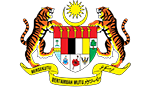الأخبار

Emulate Institut Jantung Negara's 'physical distancing' approach
التاريخ : 22 June 2020
المحرر : Roslan Bin Rusly
الفئة : News
غرد هذا
WE must have heard about Institut Jantung Negara (IJN) many times but few have the chance to visit it.
It stands proudly in Jalan Tun Razak, Kuala Lumpur, as a dominant symbol of quality healthcare. Understandably, most do not want to have anything to do with it, unless forced to. So it was with me last week but all is not lost. It was an eye-opener and a hearty one, too (no pun intended).
For the very first time since the Covid-19 outbreak, I saw what I wanted to, the phrase 'physical distancing' or 'penjarakan fisikal' clearly displayed as I stepped into the main lobby of the building. It was laid out in clear terms and well illustrated.
Compared with commercial houses and shopping malls, IJN got it hands down. Most will do the minimum, sticking coloured tapes a metre apart. So what is the fuss all about?
As an educator at heart, I believe what IJN is doing is excellent. It makes my heart flutter (pun intended). And why not? Even universities and other so-called institutions of higher learning, and schools, have missed the point. Lately, they are too busy talking about online or e-learning, seemingly oblivious to the difference between the various forms of 'distancing'.
The use of 'physical distancing' is more direct and accurate as well as easily understood. The one-metre measurement means exactly that, the 'safe' distance between any two persons. And this is well-recognised by the World Health Organisation (WHO) as the distance that droplets originating from coughs and sneezes can travel.
The same, however, cannot be said of 'social distancing' or 'political distancing'. For starters, they have different historical backgrounds. For instance, the former can be traced back to the 5th century during the days when a leprosy-like epidemic was raging. And there was no effective treatment to be found then, just like today's Covid-19.
People were desperate. As a result they took to social distancing to the extent that it stigmatised those who suffered from the disease. Sufferers were discriminated against by the larger community resulting in social tension and animosity. The impact of social distancing was overwhelming making social solidarity and bonding a near impossible task.
IJN has shown tremendous clarity of leadership by advocating physical, not social or political distancing. The combination of social and political distancing is even more damaging as seen in the BLM (Black Lives Matter) protests globally.
From the educational standpoint, it is clear that physical distancing is much easier to teach than social aspects (what does one metre mean socially?), to produce behavioural change as a 'new' normal. Now that schools and universities are to reopen soon, one wonders if social distancing will make way for physical distancing as successfully executed by IJN.
Or will the shopping mall mindset continue to be dominant in distorting the educational system by skewing the meaning of words, thus weakening the fight against the coronavirus in the long term. What is more, WHO has just warned of an accelerating and "dangerous phase" in the spread of the pandemic in the coming months.
It is imperative that educators insist on physical distancing. They should emulate IJN.
The writer, an NST columnist for more than 20 years, is International Islamic University Malaysia rector
Source : https://www.nst.com.my/opinion...








